The Visionaries: meet the eco Spider-Man
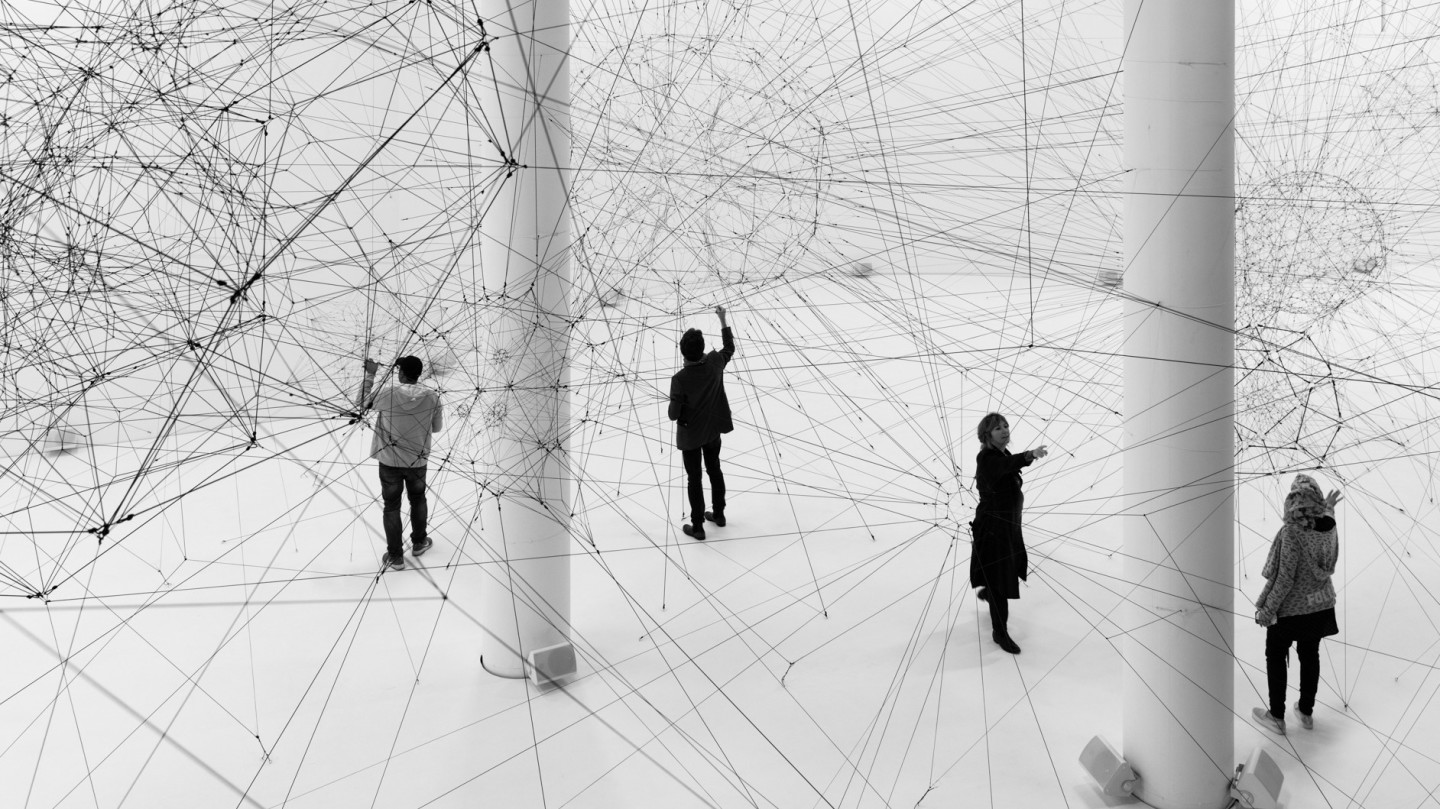
Simply sign up to the Arts myFT Digest -- delivered directly to your inbox.
On 28 January this year, on a salt flat high in the northwest of Argentina, 500 people gathered to watch a black balloon rise into a pure blue sky – an asymmetric flying sculpture powered by the sun heating the air inside. Piloted by Leticia Marques, the adventure lasted a total of 21 minutes (though previous unofficial journeys had lasted up to 128 minutes): the balloon left the ground and floated, propelled by the wind, with a multicoloured ribbon of people running beneath her, before landing 2.56km away.
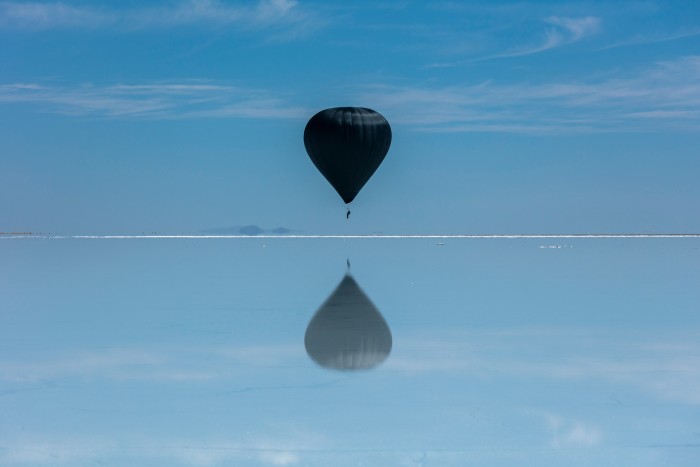
This was the launch of Argentinian artist Tomás Saraceno’s most ambitious flying machine, Aerocene Pacha – and the first time ever that a human has been carried through the air powered only by the sun and the wind, without fossil fuels, solar panels, batteries or helium. It sears to the heart of Saraceno’s ambition: a visionary way of combating the climate crisis that is as much psychological as practical, requiring us to rethink our needs by listening to those of the planet.
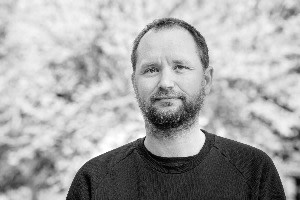
Born in 1973, Saraceno is a multidisciplinary artist best known for his astonishingly beautiful spider-web sculptures, created in his Berlin studio and lit up in darkened rooms to look like spun gold, and for his intricate, geometric and tensioned Cloud City hanging pieces, inspired by soap bubbles. The common link is air, the focus of Saraceno’s passionate environmentalism and the title of his exhibition, Aria, currently housed in the Strozzi Palace in Florence. The sequence here of conceptually dazzling displays is designed to persuade us to imagine living within the environment as spiders do. A planned solo show at New York art space The Shed will invite visitors to become like spiders, navigating sensorily heightened environments.
Saraceno was raised in Udine, Italy, where his botanist mother encouraged an early enthusiasm for arachnids. “The human species has lasted 300,000 years, spiders, more than 300 million – it’s 150 million since they began to make webs,” he says. “They have a capacity to adjust and live within the environment without harming it, in contrast to our stupidity.”
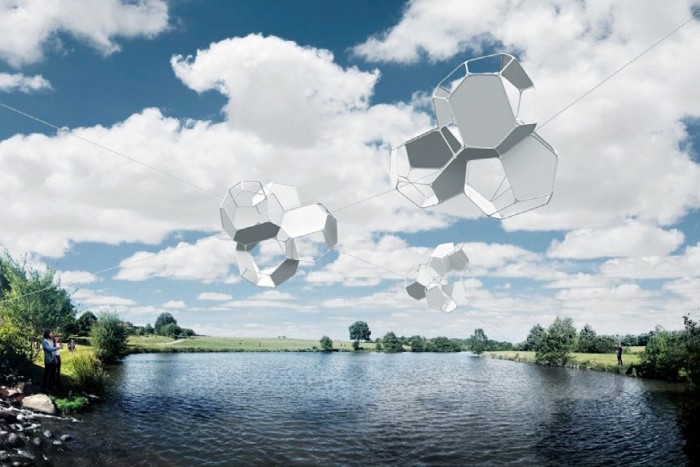
In his studio, at the top of a distressed former industrial building in Berlin, are scores of spiders constructing webs in differently dimensioned frames. These creatures are alive to their environment, he continues: spiders feel every tremor and detect microparticles of pollution that haunt the air. For Saraceno, the networks they spin are symbolic: not just of the interconnectedness of all living things, but also of our human realm and the universe; not just a metaphor, but a model for how we should live, alert to and in symbiosis with our environment.
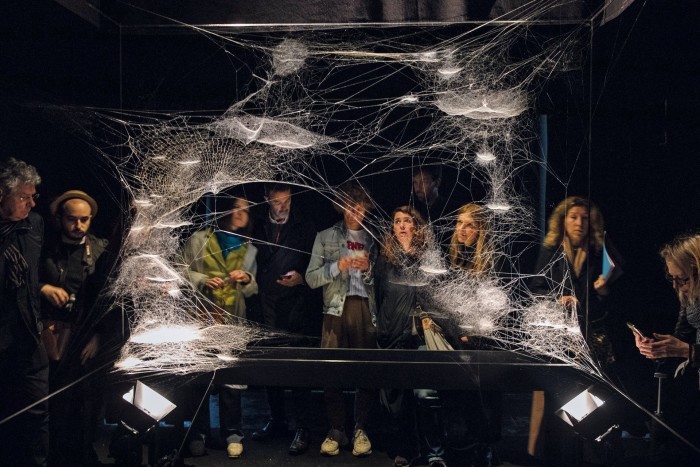
Saraceno’s sculptures, performances, installations and collaborations, including projects with MIT and Imperial College, London, are the product of work with a 50-strong studio. A former architecture student, he considers these relationships as important a part of his creative activity as the ingenious and carefully wrought artworks he sells through international galleries such as Ruth Benzacar in Buenos Aires and Esther Schipper in Berlin. At Phillips auction house last year, his 1.65m-high balloon sculpture sold for $18,750 and his mirrored double-cloud sculpture for £30,000; the 1.65m-tall web and mirrored Connectome went for £47,500 in 2018.
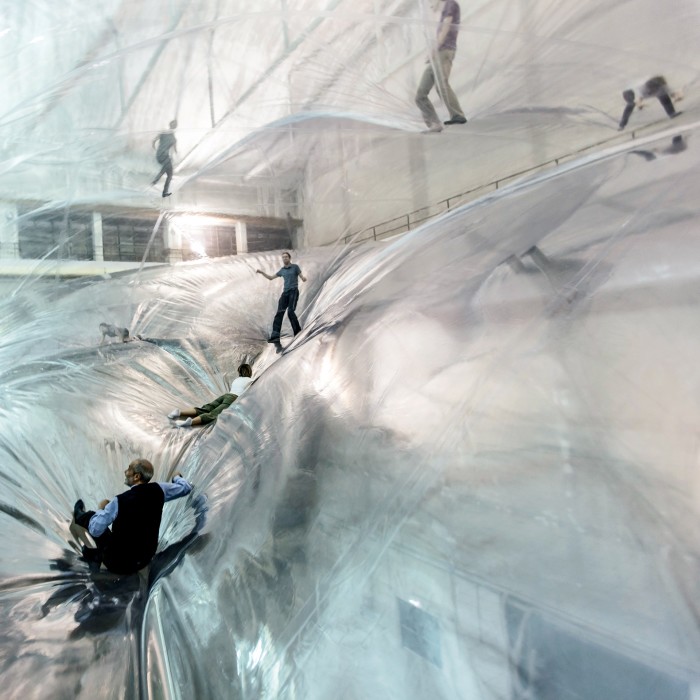
Garance Primat, a significant supporter of Saraceno’s work, has commissioned a major new Cloud City installation for her ecologically inspired château-hotel, Domaine des Etangs, in Massignac, France. Titled Du Sol au Soleil, it will hang over the water; for her, his work is “about communication between the earth and the sky; the infinitely big and the infinitely small. Everything is connected, everything has an impact. For me, Tomás is urging us to be more conscious and more careful.”
Saraceno channels a portion of the income from his art into the Aerocene Foundation, which is responsible, besides other things, for producing backpack kits enabling people to experiment with their own aero-solar balloons. “Aerocene is an epoch,” he says. “And an epoch is created by a community. And that community includes spiders, plants and the air, as well as humans – I want to create a community that will accept new ways of travelling and being in the world.”
Aerocene Pacha’s record-breaking flight in January hoped to prove that these ideals can contend with the laws of physics, health-and-safety considerations and the stark social and political realities of the remote communities where the balloon took flight. Here, the air is thick with controversy over the impact on indigenous communities as businesses rush to mine the giant salt flats for lithium – ironically a key ingredient of the so-called “green” revolution. In drawing attention to their plight while exciting people about solar energy, Saraceno hopes to join all the dots in his environmental crusade.
Comments